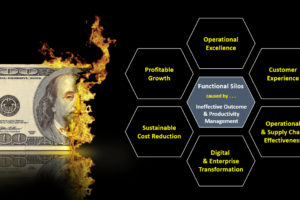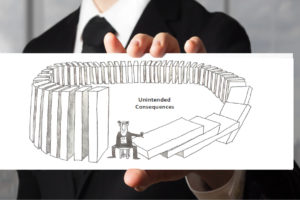The world is becoming more complex. And according to Yves Morieux, the old systems that organizations use to plan and manage performance are obsolete in this “brave new world”.
However, the processes and systems used by Finance Functions for planning, budgeting, forecasting and performance measurement are not always up to the challenge. In large companies, this is what is often experienced:
-
-
- While budgeting may be automated, it is the same process that organizations have used for the past 100 years.
- While rolling forecasts may be used, they aren’t always operationally realistic because they can’t identify the impact of operational changes on profit and cash flows – see my other posts on Rolling Forecasts for details.
- While balanced scorecards may provide greater focus on strategy, it doesn’t always help organizations execute because it is not effectively integrated with financial and operational planning and budgeting.
- While activity-based costing systems may provide greater insight into historical costs, this horizontal management approach has not found its way into forward looking planning and budgeting process, so that organizations can avoid costs in the first place.
- While portfolio management process provide greater control over projects, organizations still have difficulty accurately measuring and forecasting the cash value of potential and active projects, especially in light of operational constraints and business changes.
-
The net result is that many companies are awash in data, but lack forward looking information needed for decision-making. What’s more, they remain as siloed as they’ve always been, leaving them unable to effective execute strategies that depend on superior cross functional coordination. There is a host of research study results that provide evidence of this:
-
-
- 90% of companies fail to sustain the results of cost reduction programs for more than 3 years, Corporate Executive Board, 2008
- 25% of companies are able to sustain gains from change management initiatives over the long term, Towers Watson, 2013
- 58% of continuous improvement programs produce minimal financial impact, Accenture, 2010
- 27% of finance transformation projects deliver desired benefits and sustain the majority of cost savings for two years post-implementation, Corporate Executive Board, 2013
- 31% of manufacturers achieve forecasted benefits of lean, Alix Partners, 2011
-
For many Finance executives, this can be confusing and frustrating since they are using (what they believe to be) leading software tools. What’s becoming clear is that existing finance tools and processes aren’t always able to cope with complexity. And therefore, they don’t fully support strategy. What’s required are more integrated and sophisticated tools that can augment and / or replace them. What are your thoughts on this matter?



